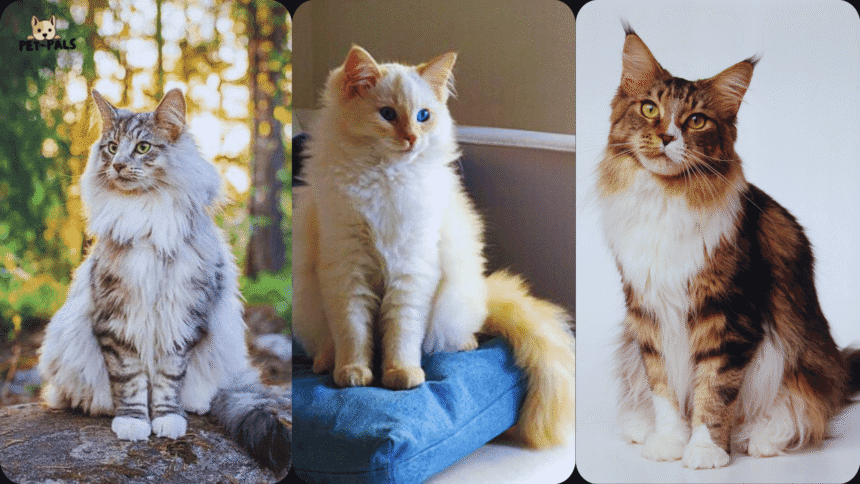Cat breeds come in all shapes and sizes, some small enough to perch comfortably on your shoulder, others large enough to rival a small dog. While every feline has its charm, there’s something uniquely appealing about a big cat.
The largest domestic cat breed often brings an added sense of presence, companionship, and even a bit of drama to a household. Whether you’re drawn to their wild look or their affectionate nature, it’s no wonder many cat lovers prefer breeds that grow to impressive sizes.
But what exactly makes a cat breed “large”? Is it just about weight, or are there other factors in play? In this guide, we’ll explore what defines a large cat, why size matters to some pet owners, and then dive into our list of the top 11 largest domestic cat breeds that could turn your living room into a runway for feline giants.
List of The 11 Largest Domestic Cat Breeds
Not all big cats have the same temperament. Here’s a quick guide to help you choose the best large cat breed based on your lifestyle and home environment:
| Cat Breed | Best For |
|---|---|
| 1. Maine Coon | Families, first-time owners, and kids |
| 2. Savannah Cat | Active households, experienced cat owners |
| 3. Norwegian Forest Cat | Cold climates, multi-pet homes |
| 4. Ragdoll Cat | Apartment living, cuddly companions |
| 5. Ragamuffin Cat | Seniors, families with children |
| 6. Siberian Cat | Allergy-prone owners, playful homes |
| 7. Chausie Cat | High-energy households, adventurous owners |
| 8. British Shorthair | Quiet homes, laid-back owners |
| 9. Turkish Van Cat | Water lovers, interactive play |
| 10. American Bobtail | Travelers, leash training, dog-like behavior |
| 11. Pixie-Bob Cat | Families who want a “wild look” but tame nature |
The 11 Largest Domestic Cat Breeds
When it comes to big cats you can cuddle, these largest domestic cat breeds top the list for size, structure, and sheer presence. Whether you’re after a playful giant or a relaxed lap companion, there’s a large breed to match your lifestyle.
1. Maine Coon
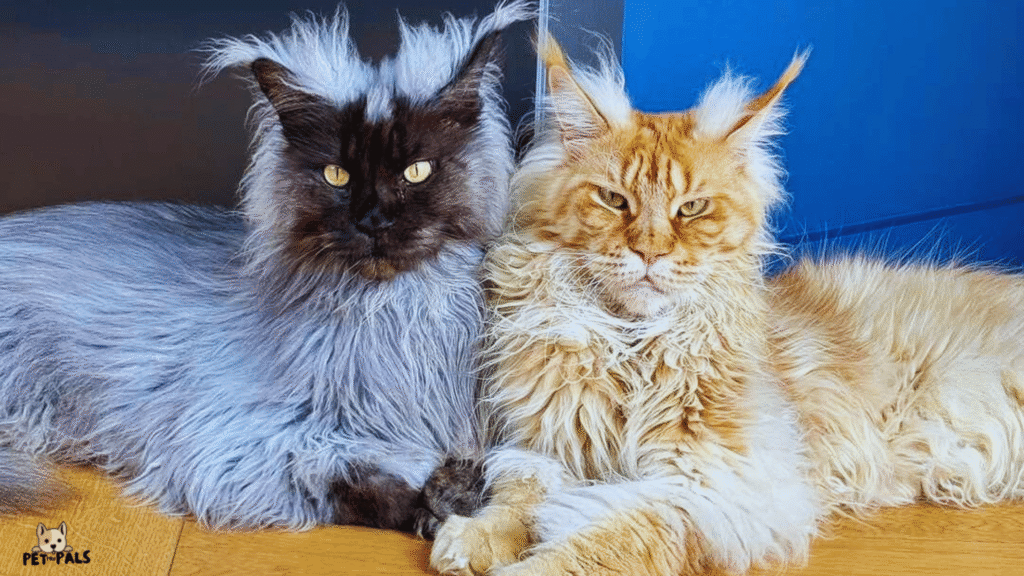
Often called the largest domestic cat breed, the Maine Coon combines brawn with a sweet, affectionate nature. With their tufted ears, bushy tails, and sociable behavior, they blend rugged looks and indoor charm perfectly.
| Trait | Description |
|---|---|
| Size | Up to 18+ lbs |
| Coat | Long, shaggy, water-resistant |
| Personality | Gentle, social, affectionate |
| Distinct Feature | Tufted ears, long bushy tail |
Read Also: How Much Is a Maine Coon Cat? [Complete Price & Care Breakdown]
2. Savannah Cat
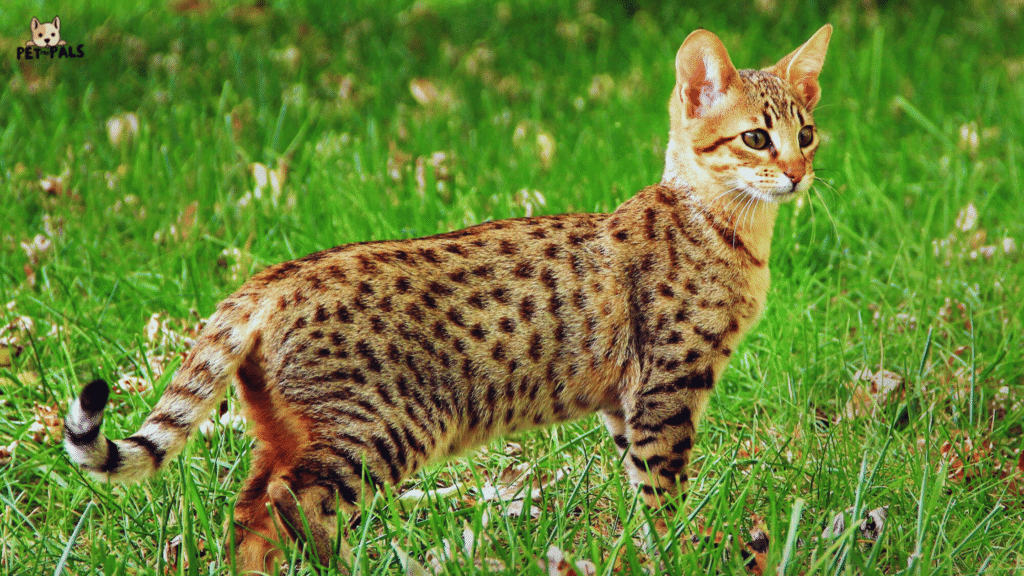
Savannah is an exotic-looking breed from crossing a domestic cat with an African serval. The result? A striking, athletic cat that craves stimulation and space. Savannahs are not for the casual pet owner; they’re adventurous, active, and need plenty of interaction.
| Trait | Description |
|---|---|
| Size | Tall, lean, athletic |
| Coat | Short, spotted |
| Personality | Energetic, intelligent |
| Distinct Feature | A hybrid of a domestic cat and several |
3. Norwegian Forest Cat
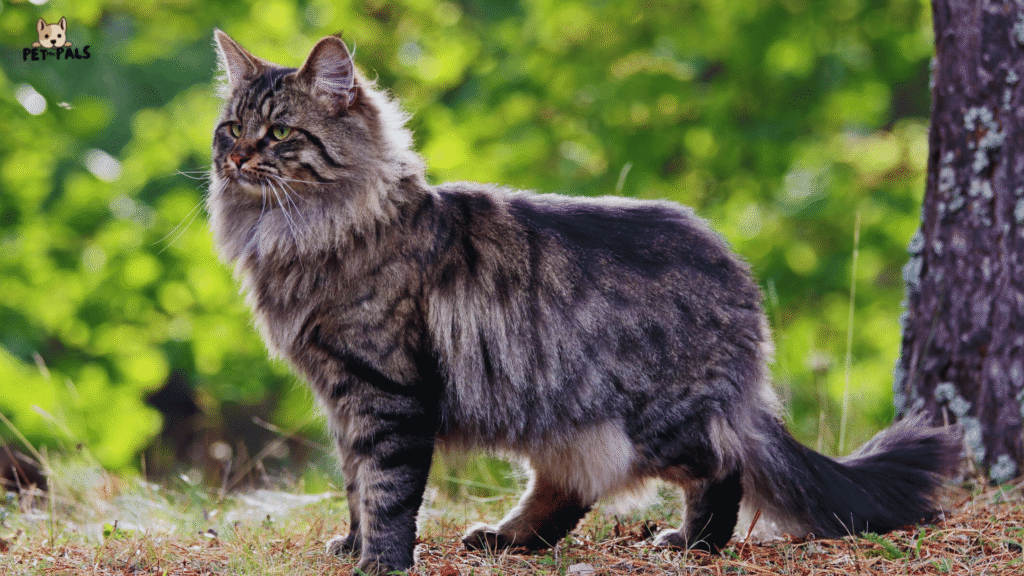
This Scandinavian native has a weather-resistant coat built for the wild. Norwegian Forest Cats are sturdy, friendly, and independent. They’re calm but can be quite playful, especially when they’re comfortable in their environment.
| Trait | Description |
|---|---|
| Size | Up to 16 lbs |
| Coat | Thick, double-layered |
| Personality | Independent, friendly |
| Distinct Feature | Cold-climate-adapted fur |
4. Ragdoll Cat
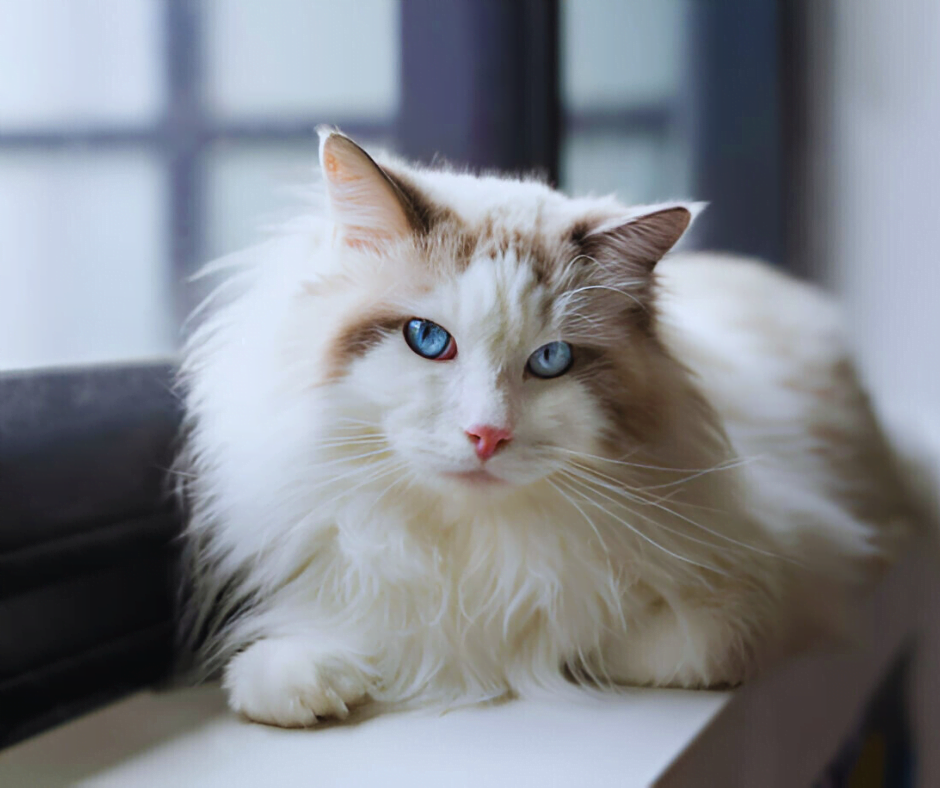
Ragdolls are famous for going limp in your arms, hence the name. These large, affectionate cats love to be around people and are especially good for families or apartment living. Their plush coats and blue eyes make them as beautiful as they are big.
| Trait | Description |
|---|---|
| Size | 15–20 lbs (males) |
| Coat | Silky, semi-longhair |
| Personality | Calm, affectionate, laid-back |
| Distinct Feature | Goes limp when picked up |
5. Ragamuffin Cat
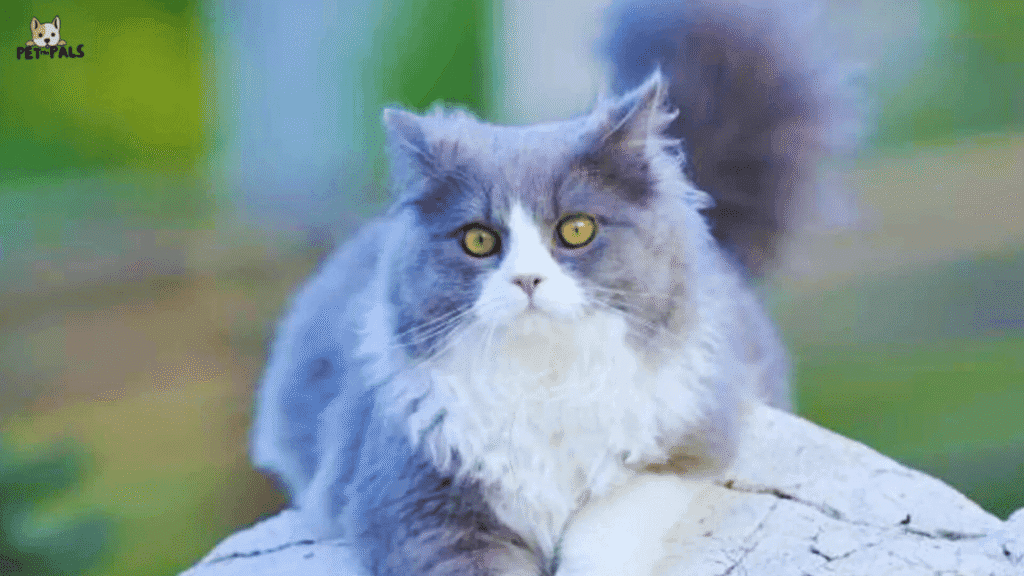
Often mistaken for Ragdolls, Ragamuffins are their breed with equally large frames and even more varied coat colors. These cats are known for their sweet personalities and love of cuddling, making them perfect lap cats with extra fluff.
| Trait | Description |
|---|---|
| Size | Similar to Ragdolls |
| Coat | Long, soft, wide color variety |
| Personality | Sweet, playful, sociable |
| Distinct Feature | Larger eyes and broader heads |
6. Siberian Cat
The Siberian Cat is Russia’s answer to cold-climate cats. With triple-layered fur and a muscular build, this breed is rugged yet affectionate. Though often marketed as hypoallergenic, that’s still debated. What’s certain is their loyalty and love for climbing.
| Trait | Description |
|---|---|
| Size | Up to 17 lbs |
| Coat | Triple-layered, water-resistant |
| Personality | Loyal, bold, agile |
| Distinct Feature | Possibly hypoallergenic |
7. Chausie Cat
A lesser-known large breed, the Chausie Cat is a cross between domestic cats and the jungle cat (Felis chaus). Agile and energetic, they look wild but are bred for the home. If you want a cat that acts more like a canine companion, the Chausie fits the bill.
| Trait | Description |
|---|---|
| Size | Long-bodied, athletic |
| Coat | Short to medium |
| Personality | Curious, smart, energetic |
| Distinct Feature | Jungle cat lineage |
8. British Shorthair Cat
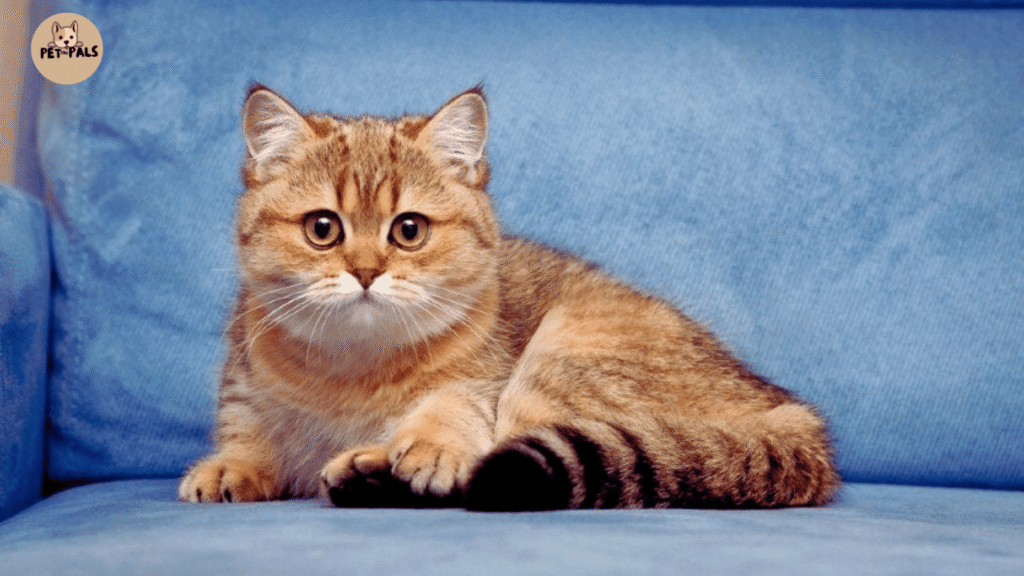
With a plush coat and round face, the British Shorthair is a teddy bear in feline form. Their compact, heavyset bodies may not be tall, but they’re impressively solid. These cats are mellow, quiet, and ideal for relaxed households.
| Trait | Description |
|---|---|
| Size | Compact, heavy |
| Coat | Dense, plush |
| Personality | Quiet, easygoing, loyal |
| Distinct Feature | Round face and chubby cheeks |
9. Turkish Van Cat
This semi-longhaired breed is known for its love of water a rare trait in the feline world. Turkish Vans are strong, agile, and independent. Their athletic frame makes them excellent climbers and surprisingly fast runners.
| Trait | Description |
|---|---|
| Size | Strong, muscular, long-bodied |
| Coat | Semi-long, water-resistant |
| Personality | Active, playful, likes water |
| Distinct Feature | Swims and enjoys water play |
10. American Bobtail Cat
With their wild look and expressive eyes, American Bobtails are both strong and affectionate. Despite their rugged appearance, they’re social cats that bond closely with their humans and adapt well to family life.
| Trait | Description |
|---|---|
| Size | Medium-large, muscular |
| Coat | Medium to long, all colors |
| Personality | Social, adaptable, dog-like |
| Distinct Feature | Naturally short tail |
11. Pixie-Bob Cat
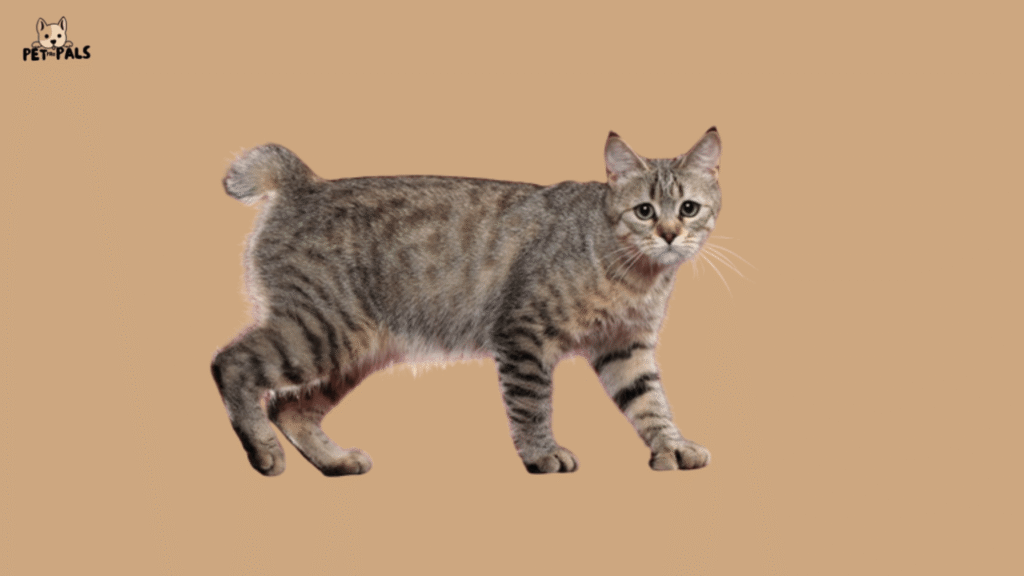
Though they resemble wild bobcats, Pixie Bobs are completely domestic and known for their gentle behavior. They’re large, sturdy, and loyal, often forming strong bonds with their families. Bonus: some are polydactyl (extra toes)!
| Trait | Description |
|---|---|
| Size | Up to 18 lbs |
| Coat | Short or long, often spotted |
| Personality | Loyal, calm, easygoing |
| Distinct Feature | Wild look, sometimes polydactyl |
What Makes a Cat Breed “Large”?
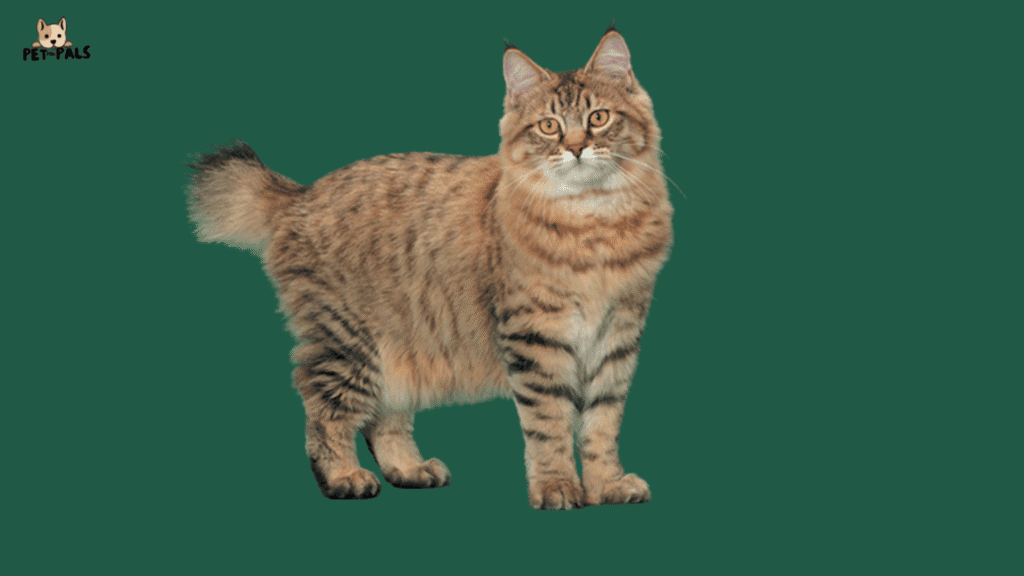
When we talk about “large” cat breeds, it’s not just about a number on a scale. Cat size can be measured in different ways, and not all big cats are created equal. Some breeds have long, lean frames, while others are stocky and heavy. Let’s break down the two key elements that define feline size.
Height vs. Weight: What Defines Size?
Most people instinctively look at weight when thinking about large cat breeds, but that’s just part of the story. Length and height also matter. A cat that weighs 15 pounds but is long and lean will feel very different from one that’s compact and solid at the same weight.
Breed standards typically consider:
- Body length: From the nose to the tip of the tail
- Shoulder height: Especially for muscular or tall breeds
- Weight range: Full-grown averages for males and females
For example, a Maine Coon male can weigh up to 18 pounds, but its size also comes from its long body and tail. In contrast, a British Shorthair may weigh the same but appear shorter and rounder due to its dense build. So, both weight and structure contribute to a breed’s overall “largeness.”
Genetic Traits and Crossbreeding
Genetics play a major role in how big a cat can get. Over generations, breeders have selectively chosen traits that emphasize size, whether it’s longer limbs, broader shoulders, or thicker bones. In some breeds, size is also influenced by crossbreeding with wildcats. For example, the Savannah cat is a cross between a domestic cat and a serval, a wild African feline, resulting in a tall, athletic frame that stands out immediately.
Even without wild ancestry, selective breeding can amplify size-related genes. That’s why some lines of Maine Coons or Ragdolls are noticeably larger than others they come from breeders who prioritize robust, oversized features.
Why Choose a Large Cat Breed?
When it comes to choosing a feline companion, size can play a surprising role in shaping your experience. Large cat breeds offer a unique blend of beauty, presence, and personality that many cat lovers find irresistible. But is a bigger cat always better for your lifestyle? Let’s break it down.
Size vs Personality
One of the most surprising things about large cat breeds is how gentle and easygoing they tend to be. Don’t let their size fool you; many of these big cats are absolute softies. Breeds like the Maine Coon and Ragdoll are often called “gentle giants” for a reason. They’re affectionate, calm, and often more sociable than their smaller counterparts.
Some large breeds are perfect for families with kids or other pets because of their laid-back personalities. While small cats can be more high-strung or territorial, many large breeds just want to lounge on the couch next to you or follow you from room to room.
Grooming and Care
One thing to consider before bringing home a large breed is their grooming needs. Many of the biggest cat breeds like the Norwegian Forest Cat, Ragdoll, or Siberian have long, thick coats that need regular care.
Weekly brushing is often enough to prevent tangles and reduce shedding, but some cats may need more frequent grooming, especially during shedding seasons. It’s also worth noting that long-haired cats might be more prone to hairballs, so a proper grooming routine helps keep things manageable for both you and your pet.
Aside from grooming, most large breeds don’t have overly complicated care needs. They enjoy stable routines, cozy sleeping spots, and, depending on the breed, some mental stimulation through toys or games.
Home Space and Activity
Large cats don’t necessarily need huge homes, but they do appreciate space to stretch, climb, and play. If you live in a small apartment, you’ll want to think creatively about vertical space. Cat trees, window perches, and wall-mounted shelves can give them room to explore without taking over your floor space.
Breeds like the Savannah or Chausie are more active and athletic, so they’ll need room to roam and interactive playtime daily. On the other hand, breeds like the British Shorthair or Ragamuffin are more laid-back and perfectly content with a few favorite napping spots and some quality cuddle time.
If you’re someone who enjoys a relaxed yet engaging pet experience, a large cat might just be your ideal companion. They often strike a perfect balance between independence and affection, making them low-maintenance in some ways and deeply rewarding in others.
Final Thoughts
When it comes to choosing a feline companion, large cat breeds offer something truly special. From the famously affectionate Maine Coon to the exotic and athletic Savannah Cat, each of the 11 breeds we explored brings its blend of size, charm, and personality.
Some are cuddly lap cats, like the Ragdoll or Ragamuffin, while others, like the Chausie or Turkish Van, bring an adventurous spirit into your home. Whether you’re drawn to the regal looks of a Siberian, the plush calmness of a British Shorthair, or the unique features of the Pixie-Bob, there’s a big cat out there to match nearly every kind of pet owner.
Large domestic cats tend to be gentle, sociable, and surprisingly easygoing, making them excellent companions for families, couples, and even solo pet lovers. With proper care, space, and a bit of grooming, these gentle giants can offer years of loving companionship.
If you’re thinking about bringing one of these majestic cats into your life, consider checking with local shelters or breed-specific rescues. Many large breeds, especially mixes end up needing new homes and can be just as loving and beautiful as purebred pets.
FAQs
What is the largest domestic cat breed?
The Maine Coon holds the title for the largest domestic cat breed overall. Adult males can weigh up to 18 pounds or more, with long, muscular frames and thick coats that make them appear even larger.
What cat is bigger than a Maine Coon?
While Maine Coons are typically the largest purebred domestic cats, the Savannah Cat can sometimes be taller due to its long legs and wild serval ancestry. However, Savannahs tend to have leaner builds compared to the bulkier Maine Coons.
Are big cats harder to care for?
Not necessarily. While some large breeds have grooming needs or require more stimulation, many are mellow, low-maintenance, and adaptable to indoor living. It’s more about the breed’s personality and coat type than their actual size.
What’s the most exotic large cat breed?
The Savannah Cat is considered the most exotic-looking of the large breeds. It’s a hybrid of a domestic cat and a wild African serval, giving it striking markings, long limbs, and a wild-cat energy.
Which large cat breeds are best with children?
Breeds like the Maine Coon, Ragdoll, and Ragamuffin are known for their gentle, affectionate nature and patience with kids. They’re typically tolerant, playful, and love being part of a family environment.

